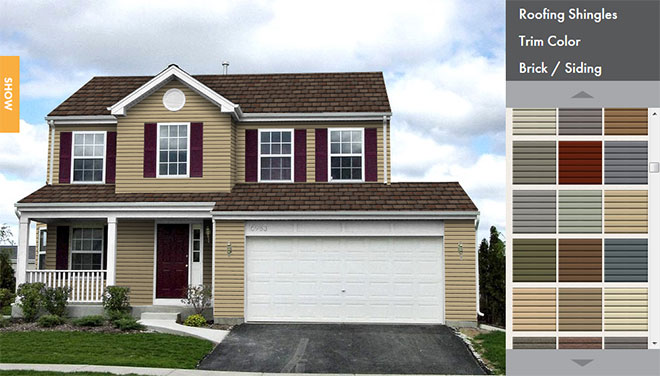Low-Rise Condo Roofing Systems Repair or Replace?
Assessment Guidelines For Roofing Systems of Low-rise Condos Minnesota
With the advent of mild weather and spring rains, condominium townhouse complex owners and are once again faced with the exterior maintenance and upkeep of existing roofing systems. Essentially, there are two main areas under which this work can be classified: minor/major repairs, and the complete replacement of roofing systems. A detailed discussion of each follows.
Minor/Major Repairs
Repair work is a fairly straightforward process. To assess whether any repair work is required, these steps should be followed:
- Initiate a survey of all residents for any leaks in their units;
- Check the grounds around each unit for signs of damaged or broken shingles;
- Visually examine the roofs of each unit for missing shingles or wind damaged roofs.
If repair work is required, condominium managers are best advised to contact their roofing contractor promptly. Repairs can usually be completed with minor disruption to residents’ daily routine within the condo townhouse complex.
Complete Replacement of Roofing Systems
How does a 50, 100, or 150- unit condo townhouse complex go about replacing all of the roofing systems? The original sloped shingle roofing systems on condo complexes built in the 1970s or 1980s are probably approaching, or have surpassed, their life expectancy. Most townhouses constructed during this period were originally shingled with the most cost-effective materials at the time of construction. Some components only just met provincial building code requirements.
Today’s roofing market offers a wide- and sometimes confusing -variety of shingles and warranties. Next to paving or waterproofing, re-roofing probably serves as the most substantial work a complex will undergo. As such, it is advisable to obtain professional advice either from a roofing consultant or professional engineer – to ensure a better system fit and avoid headaches in the long run. A consultant will draw up proper specifications, call for tender bids, help select a qualified contractor and also supervise and certify the work upon completion.
There are some Minnesota commercial roofing contractors who have extensive experience in such consulting work, and can handle large projects without the use of consultant or engineer. However, by choosing this option, condominium boards of directors and property managers should be aware that this places more responsibility on their own shoulders to supervise the work and have it certified.
When undertaking the repair or replacement of shingle roofing, the following are a number of technical areas to address:
Warranty Period and Life Expectancy of Shingles
Standard shingles are now available in 20, 23 and 30-year warranty periods. Find out how the additional cost for upgrading is reflected in a cost-per-year basis.
There are also more expensive and visually appealing custom shingles available in a layered/textured style. These costs must be tailored to fit the needs of current unit owners as well as to fall in line with the condominium reserve funds and cash flow. Condo owners may not have had the choice of the original roofing materials, but they can control the materials used in the re-roofing process.
Underlay for Eaves Protection
This process has changed dramatically within the Building Codes during the last 10 years. Poly or plastic (6mm) eaves protection is no longer acceptable and has been replaced with heavier, more durable materials. Fibreglass reinforced base sheets, along with an ice and water shield, are today’s common choices.
Roofing design, overhang size, and roof slope determine the girth (i.e. the span on the roof slope), as well as the type of eaves protection required. Metal drip edge flashing and rake edge flashing are also commonly used to extend the life expectancy of a shingle roof.
Flashings and Vents
Flashing and vents should be replaced with new ones. However, the careful removal of the existing components may allow them to be salvaged for reuse. The life expectancy of flashings and vents can also be prolonged with the use of new, higher grade caulking compounds.
Stripping or Re-Roofing Over An Existing System
The choice here is stripping. It is imperative to inspect roof decking prior to shingle replacement, and this can only be done following the complete removal of the existing roofing system.
Re-roofing over an existing layer or layers of shingle will undermine the normal life expectancy of the new system. This practice can also lead to cosmetic problems in the appearance of new shingles. Re-roofing does not afford the opportunity to upgrade all of the elements previously mentioned.
When considering the replacement of flat roof systems, cedar shingles and/or custom roofing, one is faced with different specifications that also require the expertise of a qualified Minnesota townhome roofing contractor.
As with any roofing project, condo managers and directors must be assured that the safety of residents and workers become priority number one. Compliance with regulations set forth in the Occupational Health and Safety Act for construction projects applies to retrofit and re-roofing projects, as well as to new construction. Contravention of those regulations may have serious repercussions for both the condominium unit owners and contract workers.
Liability Insurance and Workers’ Compensation coverage are necessary items to be coverage are necessary items to be covered in any roofing contract. Performance, labor and material, as well as payment bonding through insurance companies, requires the roofing contractor to adhere to contract documents and specifications.
Association Property Management & Maintenance Experts For Townhomes and Condominiums
Finally, condominium managers and directors should source references from roofing contractors during the tendering process, and compare similar projects to their condominium complex and assess the level of service provided in those projects. Experience reminds us that the cheapest price may not be the most cost-effective one when all factors are considered.
Re-roofing projects should be followed up by warranty inspections and subsequent future preventative maintenance programs. A properly executed re-roofing project will provide minimal disturbance to condominium residents, as well as trouble free roofing for many years to come.


 Click Here
Click Here Click Here To Use
Click Here To Use